Over the years we found a number of small pieces – then the metal detector revolution began – in part fueled by the advanced Minelab machines both in sensitivity and ability to pick up small pieces of metal often at fairly great depths. Suddenly old mines and tailing piles were being re-worked by hobby enthusiasts in gold bearing regions around the world.
If you were first to a proven area with the more advanced machines – you had a significant advantage. Once these areas started being detected over and over again it became much harder to find gold. This was the case after the initial excitement at using the new machines in proven areas. But detectors keep improving and with good hunting skills, one can still find nuggets in areas that have been well hunted prior.
In all the years and numerous trips my father and I had spent in the field looking for gold, we had never even come close to finding a 1 oz gold nugget with our metal detectors. Then we discovered a piece of land right in the middle of the goldfields left over from 1849 that had been recently cleared at the time by a huge brush fire. Prior to the fire this land was covered in thick chaparral – so thick you could not even walk through it.
Once the fire went through this land it exposed many old tailing piles that had not been explored for gold since the Chinese came in after the initial gold rush and reworked the mines. This was “virgin” territory for a metal detector.
Our first 1 0z nugget was found nearly next to the side of a nearby road – we nicknamed it after a friend’s dog due to its miniature Schnauzer dog-like shape. That find immediately hooked us. We went over the area with fine tooth comb with our American made machines. We found gold. But then it was time to bring in the ‘big dog’ – at the time a Minelab SD 2200d (no longer made) with an 18 inch coil. We actually didn’t need this machine initially as we visually spotted a 2 oz piece glistening right on top of one of the tailing piles. With the Minelab we pulled out one piece about 17 inches down and then our crowning achievement, our so called ‘Grand Daddy’ nugget was pulled out only a few inches below the surface – a nearly 6 oz piece. Not having a lot of experience with the Minelab machines at the time, we were pleasantly surprised to find out that even with the bigger coils, we were still pulling out tiny pieces of gold.
I am in Australia as part of Tourism Australia’s #corOZpondent program – with a suggested itinerary day and some free time in Adelaide I was itching to visit Minelab’s headquarters in Torrensville, which is only about 15 minutes from where I am staying in central Adelaide. Founder and technical wizard, Bruce Candy started what is now a global company (with manufacturing in Malaysia and sales offices here in Adelaide, Chicago and in Cork Ireland) with the idea he could build a better machine than the existing metal detectors.Bruce’s idea to create a more advanced detector than what was on the market at the time was based on the fact that Australia has a lot of mineralization in its soils (ironstone) which was masking gold from existing detector technology. He developed a detector called the Goldseekers 150000. This was Minelab’s first detector and was released in 1985. This machine was developed to find gold in Australia’s challenging soil conditions and was a game changing machine in the industry.
Today their high end metal detector is the GPX 5000. This machine is incredibly versatile – it can pick up very small pieces at some depth and larger pieces much deeper – and a solid small piece of gold at a foot or two feet depending on the conditions and exact size of the object. It can also find small pieces of gold in highly mineralized conditions. Its discrimination of junk metal (iron) that is so common around mining sites is also improved over earlier models.
Enthusiast who continue to reap the rewards of patience and research combined with a Minelab detector can do so worldwide; Minelab has a global distribution network. Not only are the machines being used for gold but are also used for searching for antiquities, jewelry and other valuable items. Military use them for hunting for certain types of landmines among other uses and logging companies use the detectors to identify metal in timber before processing.
Employees keep a couple of replicas of some of the largest and most unique gold nuggets ever found with a Minelab – the two pictured above are replicas of real nuggets found in Australia. When the founder of the ‘Hand of Faith’ nugget first started digging the signal for that piece near his home in Wedderburn, Australia, he saw some gold near the surface and thought he had found a nice little piece. The behemoth was oriented vertically in the soil rather than horizontally. He kept digging and then decided he had a pretty good find – something to certainly brag about but then the gold just kept going down into the soil and finally he unearthed one of the world’s greatest and certainly largest independent finds with a metal detector (61 pounds). Today it safely resides in the Golden Nugget Casino in Las Vegas.
Pieces like this are what every metal detector enthusiast dreams of but knows full well the odds of finding one are comparable to winning a state run lottery!
For those needing some inspiration based on what others are finding – here are some of the Minelab users’ success stories, photos and videos: www.minelab.com
And their much viewed promotional video that was released earlier this year:

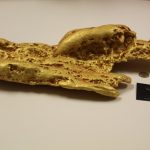
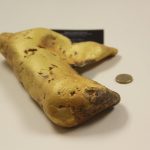
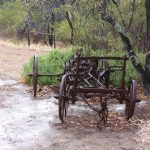

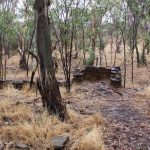
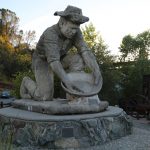
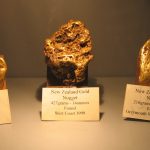


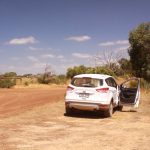

Leave a Reply